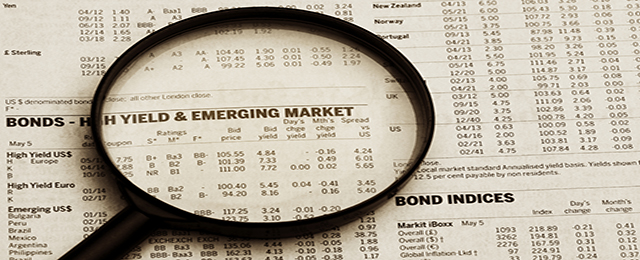Miguel Navascués | Emerging markets continue seething and carry with them ever less confidence. The latest sign is that the flight of capital has sought refuge in US bonds (and in Wall Street, a new record), among other destinations, and has reduced the yield curve to a minimum of many years of 0.23%.
In the graph, the spread or yield curve of 10-2 year bonds (blue) and 10 year FED fund (red).

This anticipates the next American recession, which clashes head on with what the other indicators say. The indicators of the real economy are robust – GDP, employment – ; but it is the case that when the yield curve approaches zero, or goes negative, the recession is probably imminent. The FED´s tendency to raise interest rates has weakened those countries which not long ago indebted themselves in dollars at 0%, but now the increase in interest rates means a difficult road and los of confidence among creditors, who will exit from those positions.
It is not just the fall of the Lira, or Venezuela. It is that all emerging markets are more or less intensely in this situation: dollar denominated debt, which appreciates in their currencies, which makes repayment more expensive. This sounds the alarms.
Moreover, the alarms are also sounding about the creditor banks and their capital ratios, as some don´t have very solid balance sheets. In this there is a fog which prevents the depth of the problema being seen, to what extent they are at risk.
Therefore, we have some emerging markets weakening and some further indebting themselves to pay their debts, supporting their currencies as they can, which is not much as when a currency falls like the Lira it is difficult to slow it. On the other hand, we have a robust US, but with delicate levels of financial assets, but which at the moment seems to be attracting the caoital flowing out of Emerging Markets. Does this not appear alarming?
Ángel Martín Oro has left us an alarming graph, which suggests that Emerging Markets at the point of falling into a slump, with Emerging Markets volatility at ten year highs.

Good, well there are people wondering is now is not the momento to invest money in them, while they are cheap. We I think it depends on how long it will take for them to rise again. And that no-one knows, because the most affected Emerging Markets – Turkey, Argentina, Venezuela – have intractable political problems which will take years to clarify. However, we will see how they become fashionable again.
But when? Ah! The financial economy is a perpetual merry-go-round, what they call the cycle, which the speculators manipulate, and has nothing or little to do with the economic and social reality. I am not being nasty taking on the speculators: I only want to make clear a bond or asset is bought or sold in the market, when they have already existed for some time, this is speculation.
While some will see the opportunity to withdraw money, there they go, and all are invited, because the more, the greater will be the rise in prices and profits … and losses when they happen.
In any event, it cannot be discounted that some stock markets, today solid, Will be infected by the fear that at the momento is limited to the Emerging Markets, as the fall in the share value of BBVA shows. There are rotten areas that we do not want to see, like the doubtful solidity of the banking sector in some places, which has taken positions in these countries.





